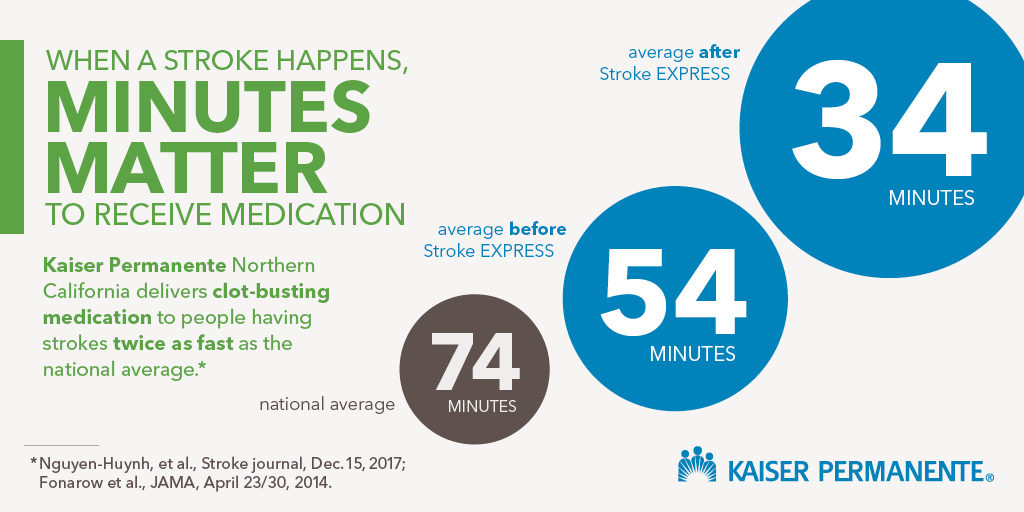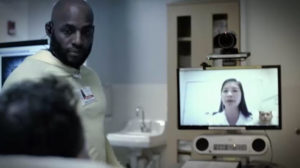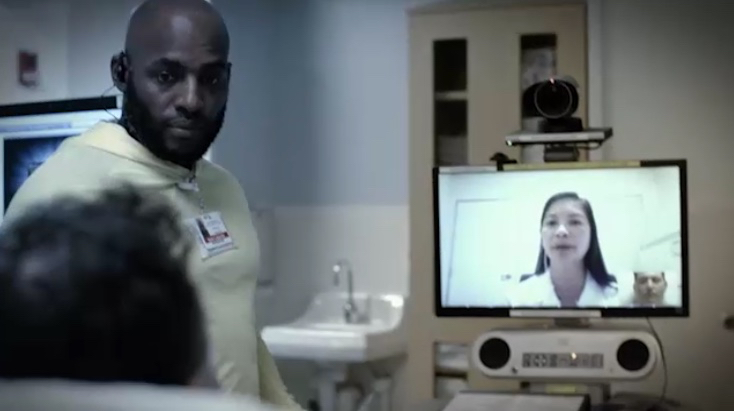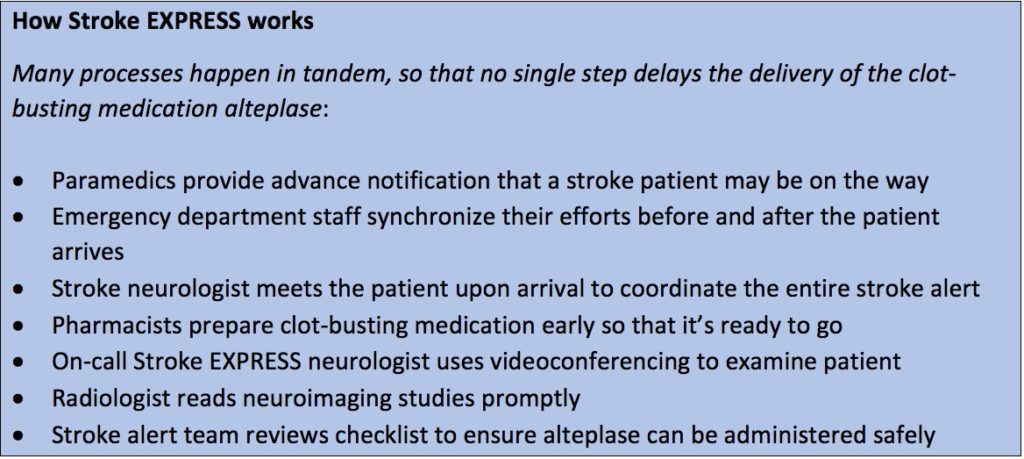With standardized protocols enhanced by use of telemedicine, “door to needle times” average just 34 minutes at all 21 Northern California hospitals
Kaiser Permanente hospitals in Northern California are delivering clot-busting medication to new stroke patients more than twice as fast as the national average. This follows the region-wide adoption of an integrated telemedicine program, according to new research published December 15 in the journal Stroke.
This is the among the first peer-reviewed, published studies to show how the successful implementation of standardized treatment protocols and telemedicine for acute ischemic stroke in a large, integrated system of hospitals can dramatically reduce the time it takes to start critical treatment.
“When a stroke happens, minutes matter,” said lead author Mai Nguyen-Huynh, MD, MAS, vascular neurologist and research scientist with the Kaiser Permanente Division of Research. “Faster treatment with intravenous r-tPA, which dissolves the stroke-causing clot and restores blood flow to the brain, is strongly associated with better functional outcomes for stroke patients.”
Intravenous r-tPA, also known as alteplase, is the only medication approved by the Food and Drug Administration to treat acute ischemic stroke.
 American Heart Association and American Stroke Association guidelines recommend “door-to-needle” times of 60 minutes or less for intravenous r-tPA. Studies show that less than 30 percent of acute ischemic patients in the United States are currently being treated within this window; the new study in Stroke shows that across Kaiser Permanente’s 21 Northern California hospitals, 87 percent of stroke patients were treated in 60 minutes or less, 73 percent in 45 minutes or less, 41 percent in under 30 minutes, and the average treatment time for intravenous r-tPA was 34 minutes.
American Heart Association and American Stroke Association guidelines recommend “door-to-needle” times of 60 minutes or less for intravenous r-tPA. Studies show that less than 30 percent of acute ischemic patients in the United States are currently being treated within this window; the new study in Stroke shows that across Kaiser Permanente’s 21 Northern California hospitals, 87 percent of stroke patients were treated in 60 minutes or less, 73 percent in 45 minutes or less, 41 percent in under 30 minutes, and the average treatment time for intravenous r-tPA was 34 minutes.

With the Stroke EXPRESS program (EXpediting the PRocess of Evaluating and Stopping Stroke), all 21 Kaiser Permanente emergency departments in Northern California were equipped with telestroke carts, which include a video camera and access to scans and tests results, enabling the stroke specialist to conduct a patient’s neurologic physical exam even when they are many miles away.
Telemedicine was integrated into a complete reorganization of how acute strokes are managed in Northern California, said co-author Jeffrey Klingman, MD, chair of chiefs of neurology for Kaiser Permanente Northern California.
“Processes that used to happen sequentially during a stroke alert, one after another, are now happening at the same time, allowing us to quickly, safely and confidently provide evaluation and treatment with intravenous r-tPA to stroke patients who can benefit,” he added.
Each member of the stroke team is responsible for executing tasks in tandem, meticulously and quickly. Paramedics provide advance notification to the emergency department that a stroke patient is on the way. A “stroke alert” notifies a stroke neurologist, who meets the patient upon arrival in person or via video to coordinate the stroke alert. Pharmacists prepare clot-busting medication early so it is ready to be administered once a radiologist has read neuroimaging and confirmed that the patient is not having a hemorrhagic stroke and is thus a good candidate for intravenous r-tPA.
On Nov. 5, 2017, Bob Wilms dozed while watching a football game on TV at his home in Cupertino; he woke up with stroke symptoms that included double-vision and numbness on one side. His wife Vickie drove him to the emergency department of Kaiser Permanente’s Santa Clara Medical Center, and Wilms started receiving intravenous-tPA 22 minutes later.
“Within 20 minutes of getting the medication, everything started to come back,” said Wilms, a retired college admissions officer who turned 69 on Nov. 27. “It just literally resolved the whole thing.” Wilms is now back to playing golf and hiking.
Stroke EXPRESS was rolled out in 21 Kaiser Permanente hospitals in Northern California from September 2015 to January 2016. The researchers compared Kaiser Permanente members treated with intravenous r-tPAin the nine months before implementation (337 patients) with those treated in the 9 months afterward (557 patients).
All 21 Kaiser Permanente medical centers in Northern California and 15 additional hospitals across the Kaiser Permanente program have been recognized by the American Heart Association/American Stroke Association for the accomplishment in the Get With The Guidelines Quality program.






This Post Has 0 Comments